Imagine you’re an ambitious startup which desperately wants to create its crypto exchange. At the same time, you don’t want to invest a great budget or time to develop a custom (proprietary) crypto exchange from the ground up. Crypto exchange development cost may reach millions of dollars in investment due to a skilled development team, compliance solutions, and liquidity providers.
White label cryptocurrency exchange is a quick, affordable option. It enables businesses to get to market fast without sacrificing quality or security. In this article, we’ll touch on the true white label crypto exchange cost. You’ll learn about covering software licensing, customization, security, compliance, hosting, and ongoing maintenance. We’ll also explore different pricing models, and hidden costs.
Whether you’re a startup or an established fintech company, budgeting for a white label CEX (cryptocurrency exchange) is crucial to getting a profitable, informed solution. Let’s break it down.
Understanding white label crypto exchanges
A white label crypto exchange is a ready-to-trade platform that firms can resell and customize as their own. Instead of building an exchange from scratch, firms can implement a prebuilt platform, significantly reducing the time to market and cryptocurrency exchange software price.
Who is a white label exchange suitable for?
- Startups & entrepreneurs – A whitelabel exchange software allows them to enter the crypto market quickly and affordably, avoiding the complexities of development from scratch.
- Traditional financial institutions – Banks and fintech firms can seamlessly expand into digital assets, integrating crypto trading and custody solutions into their existing services.
- Brokerage & trading firms – By incorporating crypto trading, these businesses enhance their offerings, attract a broader client base, and stay competitive.
- Crypto projects & DAOs (decentralized autonomous organizations) – Community organizations benefit from customizable exchanges that align with their governance models, token utility, and decentralization goals.
- Market makers & liquidity providers – Optimizing liquidity management becomes easier with tailored platforms designed to enhance trading volume, reduce slippage, and ensure market efficiency.
- Large enterprises – Corporations looking to integrate crypto services leverage a white label exchange to capture new revenue streams, maintaining compliance with financial regulations.
- Hedge funds & investment firms – Institutional investors gain access to secure and highly scalable trading environments with advanced risk management tools and deep liquidity pools.
- Gaming & metaverse platforms – Digital ecosystems can drive engagement and monetization by enabling seamless in-game transactions, NFT (non-fungible tokens) trading, and tokenized economies.
- Payment service providers – Companies facilitating cryptocurrency exchange can tap into the growing demand for crypto fiat conversions and cross-border transactions with minimal friction.
Benefits of a white label solution
Why choose a white label exchange? A crypto exchange white label software development eliminates many challenges inherent to launching a crypto exchange, which requires significant time. Here are more reasons why this approach is gaining traction.
Rapid deployment
Deploy your exchange in weeks, not invest years in development and compliance. Readily configured security modules and trading engines make deep coding unnecessary. So, you can focus on business growth and implement more custom features.
Cost optimization
Reduce millions of dollars spent on software development, security infrastructure, and legal compliance by leveraging an already built solution. Considering the cost to start a crypto exchange with white labeling, you don’t need to employ a big inner team. But you still have a futuristic exchange with regular maintenance and updates.
Regulatory readiness
Many providers include KYC/AML (Know Your Customer/Anti-Money Laundering) tools, ensuring smoother compliance with evolving crypto regulations. These tools are regularly updated to meet international standards, reducing legal risks and operational delays.
Seamless scalability
With a purchased code and an obtained license, you can continue further development. This option is not available with all providers, but at Peiko, we understand the need and desire to continue development, which is why we offer this possibility. With a modular framework, you can add any functionalities.
Proven security framework
Benefit from established security protocols, including encryption, cold storage, and fraud detection. Regular security audits and penetration testing help protect against cyber threats and ensure platform integrity.
Custom branding & flexibility
Tailor the UX (user experience), trading pairs, and features to align with your business model and audience needs. Advanced customization options let you modify UI (user interface) elements, trading fees, and liquidity sources to match your strategy.
Key features typically included
Though white label cryptocurrency exchange has a prebuilt software, check on the presence of essential features listed below, or add some in case of need.
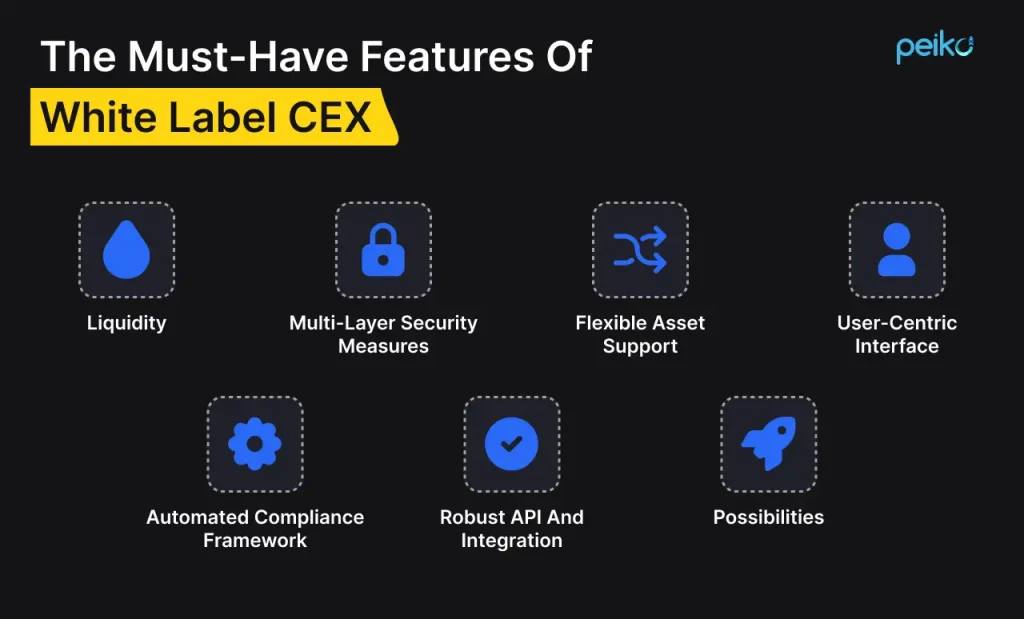
Firstly, a solid trading session is based on liquidity. Without adequate buy and sell orders, wide spreads and price fluctuations lie in wait for the trader. An optimally constructed system mixes multiple sources of liquidity to achieve tighter spreads, more even order execution and a smooth trading session.
Secondly, security is not so much about compliance as about trust. Robust frameworks employ cold storage to lock up assets, multi signature approval for withdrawals, and greater encryption for user information. Fraud protection systems actively monitor trading activity to prevent unauthorized access and malfeasance.
Thirdly, market dynamics shift very quickly, and an exchange must adapt. A planned infrastructure facilitates the ease of bringing in new digital assets, whether they are cryptocurrencies, stablecoins, or tokenized assets. Such flexibility keeps the platform alive and thriving with industry dynamics.
Next, traders require speed, convenience, and insight. The best interface balances intuitive ease with advanced capabilities, including customizable dashboards, live analysis, and automated trading. Configured correctly, it maximizes usage and resonates with both new and experienced traders.
Then, regulations are evolving, and legal compliance may be difficult. A compliance framework is designed with automated identity verification, transaction monitoring, and reporting tools to support compliance with KYC/AML regulations. This ensures smooth operations while minimizing regulatory risks.
And lastly, exchanges don’t exist in a vacuum – there needs to be outside integration with third party services. Strong API support provides greater automation , more functionality and enables companies to customize the platform.
Core cost factors
Below is an analysis of the underlying while label cryptocurrency exchange development cost drivers, each affecting total investment and scalability. What affects the white label crypto exchange cost?
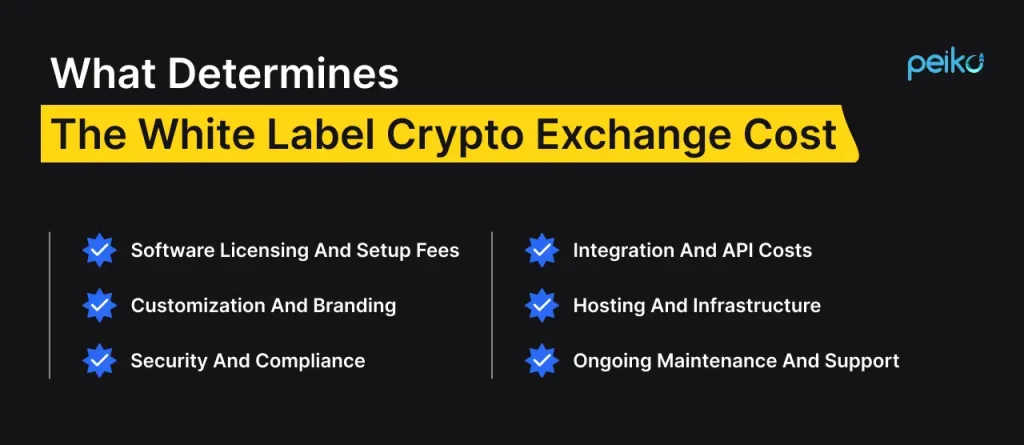
Software licensing and setup fees
Licensing fees vary widely. Some providers offer an upfront cost to start a crypto exchange, while others offer a subscription. Basic setups would start at around $10,000, but custom versions can escalate to more than $100,000.
Customization and branding
Generic platforms won’t be special in a competitive market. Branding, UI/UX optimization, and feature tuning are expensive. Personalized crypto exchange white label software development ranges from $5,000 to $30,000. It depends on design updates, complexity levels, and feature expansion.
Security and compliance
Secure exchanges necessitate multi level security, from cold storage and distributed denial of service (DDoS) protection to transaction watching. Regulatory requirements can again add overhead, with permits in top regulatory jurisdictions running at half a million or more per year.
Integration and API costs
A crypto exchange is not an isolated product—it must integrate seamlessly with payment gateways, liquidity providers, analytics tools, and third party applications. Custom API building or additional third-party integration can add $5,000 to $20,000 to the price.
Hosting and infrastructure
Companies typically need global distribution of servers to keep latency low for traders in different regions. The hosting cost is quite diverse. It’s based on server capacity, redundancy, and security features, it normally varies between $5,000 to $50,000 per month.
Ongoing maintenance and support
Maintaining a centralized crypto exchange development is an ongoing financial commitment. Software updates, bug fixes, server scaling, and 24/7 technical support all contribute to operational costs. Monthly maintenance costs can vary from $10,000 to $100,000.
Pricing details: models, hidden costs, and budget planning
Improper model choice or hidden costs can quietly erode margins if not budgeted for. A planned budget must consider upfront development and ongoing operational needs. What follows is a summary of standard pricing models and key hidden costs.
Models
- One time license fee – A hefty upfront payment of typically between $50,000 and $500,000 grants perpetual use of the platform. This is a good choice for businesses that desire entire operations control with no recurring costs but require a heavy capital investment.
- Subscription model – Periodic fees, ranging from $5,000 to $50,000 monthly, cover software usage, hosting, and support. This offers fixed charges and lower initial risk but is costly over the long term.
- Revenue sharing model – Vendors are paid a percentage of trading commissions or volume, typically 10% to 30%. Vendor success depends on platform growth but squeezes profit margins as trading volume expands.
- Hybrid models – Certain vendors merge fixed costs with revenue-sharing. It offers reduced front-end costs but with a percentage of subsequent revenues. This choice smooths out financial risk and ensures ongoing vendor support.
Hidden costs and considerations
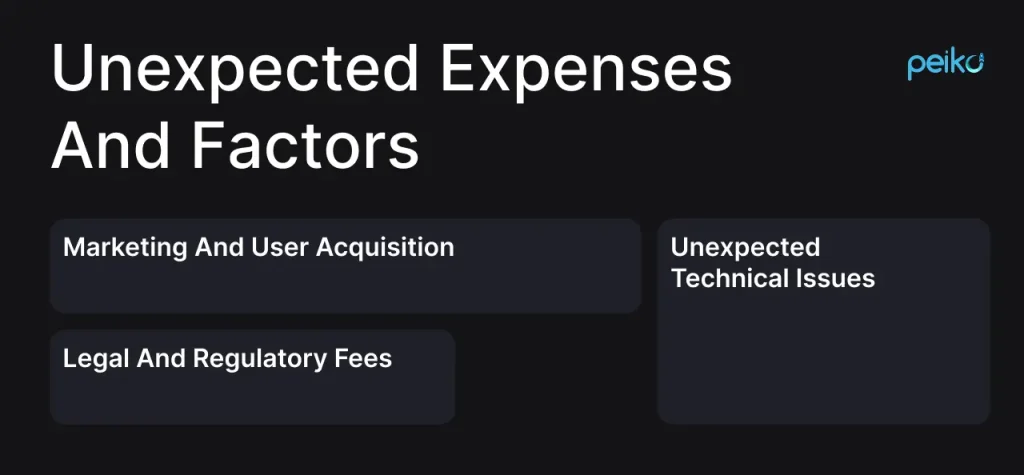
Marketing and user acquisition are necessary. But be ready for them being costly. Paid advertisement, influencer partnerships, and search engine optimization are necessary for competing. Discount fee onboarding bonuses are added expenses. Market reach will require capital requirements white label CEX between $50,000 and $500,000 a month in advertising alone.
Regulatory compliance is an important cost. Attorneys, legal fees, and U.S. or EU compliance to establish cost between $100,000 and $500,000, and over $200,000 per year. Ignorance of compliance can lead to fines, lawsuit, or firm closure.
Technological malfunctions can be cataclysmic. System breakdowns, liquidity crises, or computer virus intrusions demand immediate rectification. Large volumes require large scalability expenditures. Security breaches can result in multimillion dollar losses and necessitate a contingency reserve of 10-20% of operating costs.
Potential drawbacks of white label solutions
It’s worth noting some of the pitfalls that businesses can face with some while label solutions providers. At Peiko, we build our products to overcome these challenges directly, so our clients don’t have to suffer from these disadvantages.
1. Reliance on provider stability
Most providers use a subscription model, so your exchange’s success depends on their ongoing activities. When the provider is faced with issues or goes out of business, your platform is at risk.
- How Peiko solves this: We offer a purchased code and licensing solution, giving you full ownership and control of your exchange. Even if you decide to continue development independently, your platform is safe and sound.
2. Limited customization
Others can offer outdated or too generic solutions that fail to meet modern market demands. These platforms are not very flexible and, therefore, can’t be customized according to your business needs.
- How Peiko overcomes this: Our white-label offerings are built on a modular platform, so they have space for epic customization. From UI/UX creation to high-level trading functionalities, we ensure that your platform is tailored to your brand and user base.
3. Inadequate ongoing development and support
Most services give you the same product and then leave you alone without resources or knowledge to help it grow or support it. This holds things back and makes your platform prone to technical loopholes.
- How Peiko does it: We provide ongoing support and development services to ensure that your exchange develops with your business. Whether it’s adding new features, enhancing performance, or ensuring compliance, we are here to assist you in growing every step of the way.
Peiko is here for any of your white-label CEX development needs
We are proud to be one of the best software development companies specializing in blockchain technology, developing bespoke cryptocurrency exchange platforms. Peiko specializes in high-performing, secure, and scalable financial systems that allow organizations to launch innovative trading platforms.
Our expertise lies in full development, including architecture design and security integration, compliance, and UI/UX optimizations. See our portfolio to grasp our capabilities further. Collaborating with you, we’ll clarify what exactly you want and develop it.
For instance, Bitsten is a cryptocurrency exchange designed for seamless digital asset trading. Built as a white-label solution, it allows businesses to quickly launch their own branded exchange with essential trading features, deep liquidity, and strong security protocols. The platform supports real time price updates, automated liquidity management, and multi-layered security measures to ensure safe transactions.
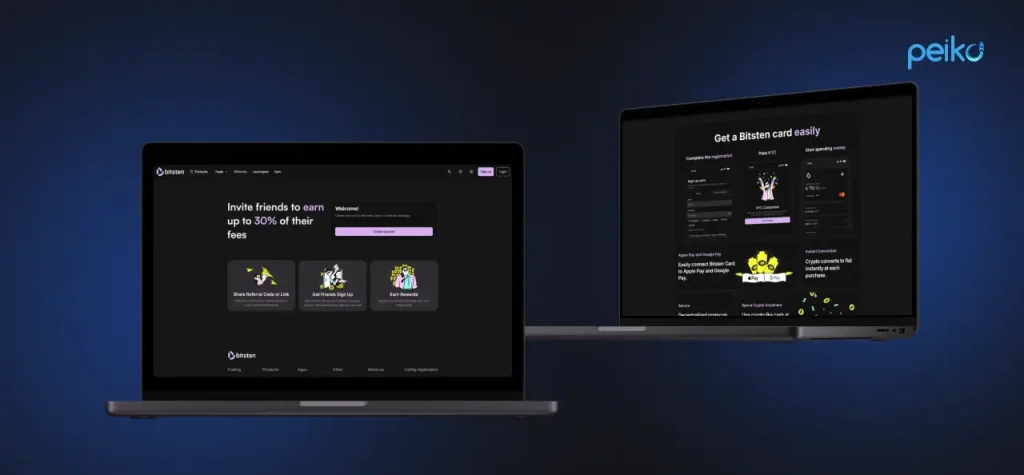
Solution delivered
- Real-time trading and market updates Enabled through a low-latency socket server that ensures instant price feeds and trade execution.
- Advanced liquidity management Integrated with leading liquidity providers like Huobi and B2C2, ensuring stable markets and minimal slippage.
- Secure crypto storage Utilizing a multi tier cold and hot wallet system with encryption and secure transaction handling.
- Integrated KYC and compliance Seamless user verification powered by SumSub for regulatory adherence.
- Customizable white label framework Allowing businesses to personalize branding while leveraging a ready exchange infrastructure.
- Multi tier referral and commission structure Designed to enhance user acquisition and retention through rewards and incentives.
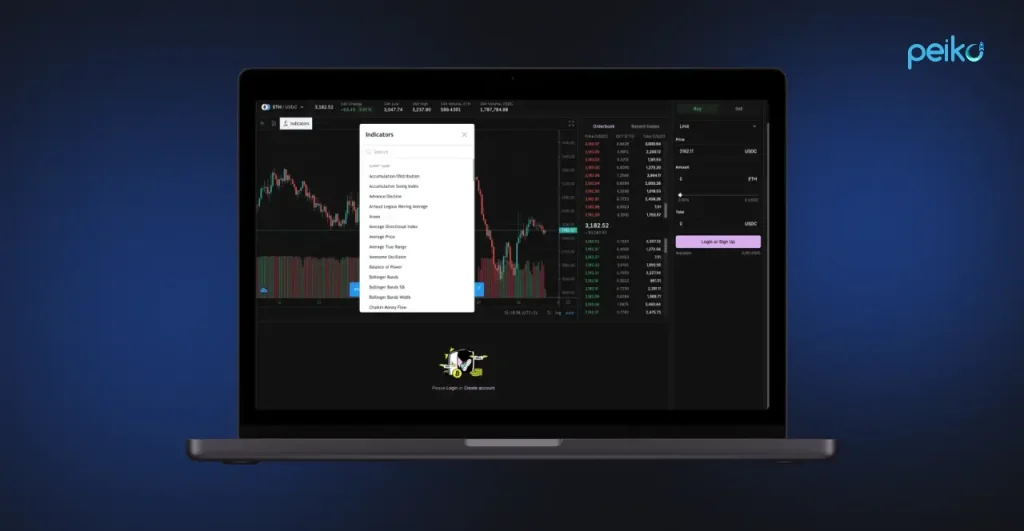
Why Peiko?
With deep expertise in crypto exchange development, Peiko offers scalable, secure, and smoothly performing trading platforms like Bitsten. Whether smart contracts and stablecoin structuring or seamless Stripe crypto connections, we offer solutions to show your business uniqueness.
Conclusion
A white label crypto exchange is an opportunity to launch to market without going back to scratch. However, success doesn’t just depend upon having the tech. It depends on how well it gets used. Getting the right strategy, liquidity handling, and compliance tools can mean between a winning and a struggling exchange. Choosing the perfect provider defines how you implement, innovate, and replicate your platform.
The lower white label cryptocurrency exchange cost compared to custom built crypto exchange development cost doesn’t mean that white label CEX is less effective than a fully custom built exchange. In fact, with the right strategy, a white label platform can outperform many from scratch solutions. It reduces development time and costs and allows founders to focus on expansion.
The cryptocurrency space is evolving rapidly, and only those who will be innovative and adaptive in the process will endure. Choose Peiko for the desirable fast, cost effective, and scalable crypto exchange solution. Want a lasting crypto exchange? Contact us today!
FAQ
A white-label crypto exchange cost usually ranges from $50,000 to $150,000 based on features, security, compliance, and bespoke work.
When built from scratch, crypto exchange development cost ranges from $500,000 to $5M+, consisting of development, security, legal compliance, liquidity, and infrastructure.
Choose a reliable provider as Peiko, become compliant with regulations, introduce liquidity, customize UI/UX, implement strong security, and go live with a successful marketing strategy.
A white-label crypto solution allows companies to launch their own branded exchange on pre-existing infrastructure or just in more affordable way than a regular exchange.
Yes, compliance is required. Licensing is based on service—spot trading, derivatives, or fiat integration, and affects much the cryptocurrency exchange development cost.









